Recommended Books
Grades K-3 – Japan
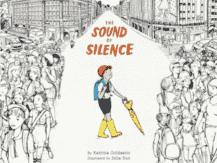
The Sound of Silence
“Do you have a favorite sound?” little Yoshio asks. The musician answers, “The most beautiful sound is the sound of ma, of silence.”
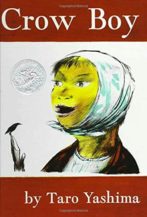
Crow Boy (Picture Puffin Books)
Winner of a Caldecott Honor
A shy Japanese boy having difficulty adjusting to school is misjudged by his classmates. Chibi has been an outcast since that frightening first day of school when he hid under the schoolhouse. Afraid of the teacher and unable to make any friends, Chibi passes his free time alone — alone at study time, alone at playtime, always a “forlorn little tag-along.” But when Mr. Isobe arrives, the teacher sees things in Chibi that no one else has ever noticed…
“A shy mountain boy in Japan leaves his home at dawn and returns at sunset to go to the village school. Pictures and text of moving and harmonious simplicity.” —Saturday Review
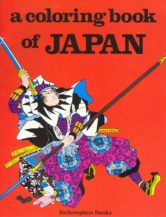
Japan
This is a splendid history of Japanese art, from the most ancient to Hokusai & Utamaro. There are warriors, actors and dancers, children at play and amusing animals.
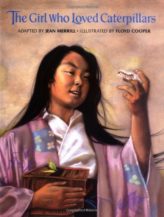
The Girl Who Loved Caterpillars
Living in twelfth-century Japan, Izumi, a young girl who is fascinated by small creatures, especially caterpillars, ignores the rigid conventions of Japanese court life and the wishes of her parents to pursue her own interests and choices.
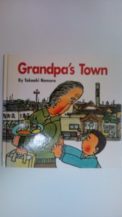
Grandpa's Town (English, Japanese and Japanese Edition)
A young Japanese boy, worried that his grandfather is lonely, accompanies him to the public bath
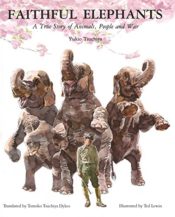
Faithful Elephants: A True Story of Animals, People, and War
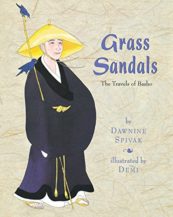
Grass Sandals: The Travels of Basho
An evocative portrait of the great Japanese haiku poet describes Basho’s many experiences as he traveled throughout his beloved native Japan, in a volume that also includes haiku written by Basho and Japanese characters that represent words from the verses.
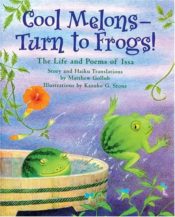
Cool Melons - Turn To Frogs!: The Life And Poems Of Issa
Born in 1763 on a farm in central Japan, Issa began writing haiku as a young child. Matthew Gollub has integrated the story of Issa’s life and selections of his best-known work with Kazuko Stone’s visual interpretations in the form of whimsical watercolors. Full color.

Wabi Sabi
Wabi Sabi, a little cat in Kyoto, Japan, had never thought much about her name until friends visiting from another land asked her owner what it meant.
At last, the master
Says, “That’s hard to explain.” And
That is all she says.
This unsatisfying answer sets Wabi Sabi on a journey to uncover the meaning of her name, and on the way discovers what wabi sabi is: a Japanese philosophy of seeing beauty in simplicity, the ordinary, and the imperfect.
Using spare text and haiku, Mark Reibstein weaves an extraordinary story about finding real beauty in unexpected places. Caldecott Medal-winning artist Ed Young complements the lyrical text with breathtaking collages. Together, they illustrate the unique world view that is wabi sabi.
A New York Times Best Illustrated Children’s Book for 2008!
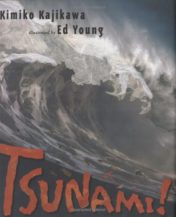
Tsunami! (Rise and Shine)
Ojiisan, the oldest and wealthiest man in the village, doesn’t join the others at the rice ceremony. Instead he watches from his balcony. He feels something is coming; something he can’t describe. When he sees the monster wave pulling away from the beach, he knows. Tsunami! But the villagers below can’t see the danger. Will Ojiisan risk everything he has to save them? Can he?
Illustrated in stunning collage by Caldecott winner Ed Young, here is the unforgettable story of how one man’s simple sacrifice saved hundreds of lives. An extraordinary celebration of both the power of nature and the power each of us holds within.
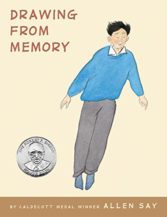
Drawing From Memory
Caldecott Medalist Allen Say presents a stunning graphic novel chronicling his journey as an artist during WWII, when he apprenticed under Noro Shinpei, Japan’s premier cartoonist
DRAWING FROM MEMORY is Allen Say’s own story of his path to becoming the renowned artist he is today. Shunned by his father, who didn’t understand his son’s artistic leanings, Allen was embraced by Noro Shinpei, Japan’s leading cartoonist and the man he came to love as his “spiritual father.” As WWII raged, Allen was further inspired to consider questions of his own heritage and the motivations of those around him. He worked hard in rigorous drawing classes, studied, trained–and ultimately came to understand who he really is.
Part memoir, part graphic novel, part narrative history, DRAWING FROM MEMORY presents a complex look at the real-life relationship between a mentor and his student. With watercolor paintings, original cartoons, vintage photographs, and maps, Allen Say has created a book that will inspire the artist in all of us.

Creative Haven Japanese Prints Coloring Book (Creative Haven Coloring Books)
Lose yourself in “pictures of the floating world,” the distinctive Japanese art form known as Ukiyo-e. Includes over 30 detailed, ready-to-color reproductions of woodblock prints by Kiyonaga, Utamaro, Hokusai, Hiroshige, and other masters. Pages are perforated and printed on one side only for easy removal and display. Specially designed for experienced colorists, Japanese Prints and other Creative Haven® coloring books offer an escape to a world of inspiration and artistic fulfillment. Previously published as Japanese Prints Coloring Book.
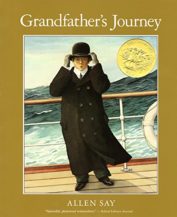
Grandfather's Journey
A Japanese-American man recounts his grandfather’s journey to America which he later also undertakes, and the feelings of being torn by a love for two different countries. A Caldecott Medal Winner. Reprint.
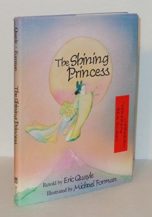
The Shining Princess and Other Japanese Legends
Drawn from the two earliest known English translations, these ten examples of Japanese folk literature run the gamut from heroism to humor

The Wakame Gatherers
Nanami has two grandmothers: Baachan, who lives with her family in Japan, and Gram, who lives in Maine. When Gram visits Japan for the first time, Baachan takes her and Nanami on a trip to the seaside to gather Wakame, a long, curvy seaweed that floats near the shore.<br> <br> While the three assemble their equipment and ride the streetcar to the beach, Baachan explains how Wakame and other seaweeds are used in Japan. Gram shares stories about how seaweeds are used in Maine, and Nanami translates for them both.<br> <br> By the end of the day, Nanami’s two grandmothers discover that they have much in common despite being from countries that fought in the war they both remember vividly. Now, looking out across the beach at the surfers, dog walkers, and seaweed gatherers, they share an appreciation of this precious peace. Holly Thompson’s beautiful prose captures the exuberance of a young girl who easily traverses between two cultures and languages. It also illuminates the love and understanding that grow between two older women who are so different, yet share an unbreakable bond. Kazumi Wild’s bright, vivid paintings make the Japanese landscape and the rocky shores of Maine come alive, reminding us all that we share this earth and the peace that we create.
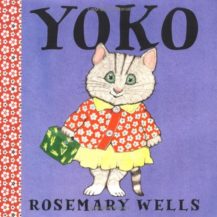
Yoko
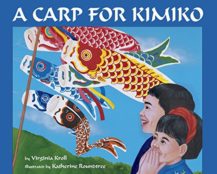
A Carp for Kimiko
A CARP FOR KIMIKO is the story of a young girl’s struggle against the strong current of tradition. Every year on Children’s Day in Japan a kite in the shape of a carp is flown for each boy in the family. Kimiko is a little girl who desperately wants an orange, black, and white calico carp kite of her own to fly on this holiday.
Kimiko’s parents remind her that there is a holiday just for girls–Doll’s Festival Day, but this does not stop Kimiko from dreaming about and wishing for her very own carp. The magical ending achieves the impossible–Kimiko gets what she longs for without breaking tradition. Katherine Roundtree’s beautiful illustrations evoke the wonder and excitement of childhood, which will charm readers of all cultures.

Hiroshima No Pika
August 6, 1945, 8:15 a.m.
Hiroshima. Japan
A little girl and her parents
are eating breakfast,
and then it happened.
HIROSHIMA NO PIKA.
This book is dedicated to
the fervent hope the Flash
will never happen again,
anywhere.
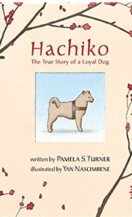
Hachiko: The True Story of a Loyal Dog
Hachiko was a real dog who lived in Tokyo, a dog who faithfully waited for his owner at the Shibuya train station long after his owner could not come to meet him. He became famous for his loyalty and was adored by scores of people who passed through the station every day. This is Hachiko’s story through the eyes of Kentaro, a young boy whose life is changed forever by his friendship with this very special dog. Simply told, and illustrated with Yan Nascimbene’s lush watercolors, the legend of Hachiko will touch your heart and inspire you as it has inspired thousands all over the world.
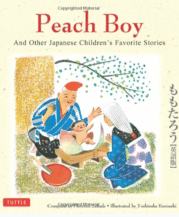
Peach Boy And Other Japanese Children's Favorite Stories
This colorfully illustrated multicultural children’s book presents several Japanese fairy tales and other folk stories—providing insight into a rich oral culture.
Welcome to a fantastic world populated by magical teakettles, long-nosed goblins, brave warriors, and a host of other beloved characters who have lived on for centuries in the traditional tales of Japan.
Drawn from Japanese folklore that has been passed down from generation to generation, the nine enchanting stories collected in this volume have been lovingly retold just for today’s readers. They make perfect new additions for story time or bedtime reading. Vibrantly illustrated and full of thrilling adventures, funny discoveries and important lessons, they’re sure to become story time favorites.
Included are some of Japan’s best-loving children stories:
- Peach Boy
- The Magic Teakettle
- Monkey-Dance and Sparrow-Dance
- The Long-Nosed Goblins
- The Rabbit in the Moon
- The Rabbit in the Moon
- The Tongue-Cut Sparrow
- Sill Saburo
- The Toothpick Warriors
- The Sticky-Sticky Pine
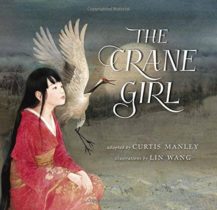
The Crane Girl
While gathering firewood, Yasuhiro comes upon an injured crane hidden in the snow. He rescues and comforts the bird, then watches it fly away. The next night, a mysterious young girl arrives at his home seeking shelter from the cold. The boy and his father welcome the girl, named Hiroko, to stay with them. But when Hiroko notices that the father is struggling to earn money, she offers to weave silk for him to sell. After the fabric fetches a good price, the father becomes impatient for more silk, and his greed has a life-changing effect on them all. Lyrical storytelling deftly interwoven with original haiku create a magical adaptation of popular Japanese folktales. An inspirational story of friendship and the power of kindness to transform lives.
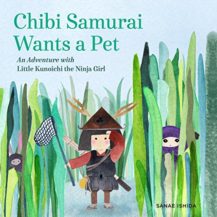
Chibi Samurai Wants a Pet: An Adventure with Little Kunoichi the Ninja Girl
In this new additon to the Little Kunoichi series, author and illustrator Sanae Ishida’s beautiful art pairs with a gentle, fun lesson, featuring Little Kunoichi’s buddy, Chibi Samurai.
Inspired by Little Kunoichi’s relationship with her pet ninja bunny, Chibi Samurai sets off to find a companion for himself. He explores many possibilities from Japanese culture–both real and mythical–thinking about how each creature might be as a pet.
Little Kunoichi and her pet bunny cheer him on as he searches and searches, until finally Chibi realizes that the perfect pet, just right for a little samurai, has been with him all along.
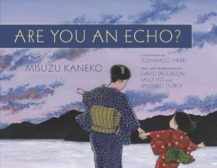
Are You an Echo?: The Lost Poetry of Misuzu Kaneko
In early-1900s Japan, Misuzu Kaneko grows from precocious bookworm to instantly-beloved children’s poet. But her life ends prematurely, and Misuzu’s work is forgotten. Decades later her poems are rediscoveredjust in time to touch a new generation devastated by the tsunami of 2011. This picture book features Misuzu’s life story plus a trove of her poetry in English and the original Japanese.
Big Catch:
At sunrise, glorious sunrise
it’s a big catch!
A big catch of sardines!
On the beach, it’s like a festival
but in the sea, they will hold funerals
for the tens of thousands dead.
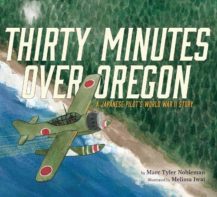
Thirty Minutes Over Oregon: A Japanese Pilot's World War II Story
An Orbis Pictus Honor Book for Outstanding Nonfiction 2019In this important and moving true story of reconciliation after war, beautifully illustrated in watercolor, a Japanese pilot bombs the continental U.S. during WWII—the only enemy ever to do so—and comes back 20 years later to apologize.
The devastating attack on Pearl Harbor, Hawaii, drew the United States into World War II in 1941. But few are aware that several months later, the Japanese pilot Nobuo Fujita dropped bombs in the woods outside a small town in coastal Oregon. This is the story of those bombings, and what came after, when Fujita returned to Oregon twenty years later, this time to apologize.
This remarkable true story, beautifully illustrated in watercolor, is an important and moving account of reconciliation after war.
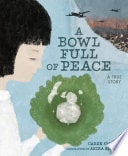
A Bowl Full of Peace
“Six-year-old Sachiko and her family suffered greatly after the atomic bombing of Nagasaki, and in the years that followed, the miraculous survival of a ceramic bowl became a key part of Sachiko’s journey toward peace”–
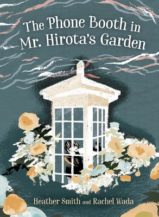
The Phone Booth in Mr. Hirota's Garden
When the tsunami destroyed Makio’s village, Makio lost his father . . . and his voice. The entire village is silenced by grief, and the young child’s anger at the ocean grows. Then one day his neighbor, Mr. Hirota, begins a mysterious project—building a phone booth in his garden. At first Makio is puzzled; the phone isn’t connected to anything. It just sits there, unable to ring. But as more and more villagers are drawn to the phone booth, its purpose becomes clear to Makio: the disconnected phone is connecting people to their lost loved ones. Makio calls to the sea to return what it has taken from him and ultimately finds his voice and solace in a phone that carries words on the wind.
The Phone Booth in Mr. Hirota’s Garden is inspired by the true story of the wind phone in Otsuchi, Japan, which was created by artist Itaru Sasaki. He built the phone booth so he could speak to his cousin who had passed, saying, “My thoughts couldn’t be relayed over a regular phone line, I wanted them to be carried on the wind.” The Tohoku earthquake and tsunami in 2011 destroyed the town of Otsuchi, claiming 10 percent of the population. Residents of Otsuchi and pilgrims from other affected communities have been traveling to the wind phone since the tsunami.
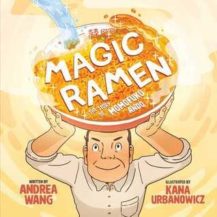
Magic Ramen: The Story of Momofuku Ando
Inspiration struck when Momofuku Ando spotted the long lines for a simple bowl of ramen following World War II. Magic Ramen tells the true story behind the creation of one of the world’s most popular foods.
Every day, Momofuku Ando would retire to his lab—a little shed in his backyard. For years, he’d dreamed about making a new kind of ramen noodle soup that was quick, convenient, and tasty for the hungry people he’d seen in line for a bowl on the black market following World War II. Peace follows from a full stomach, he believed.
Day after day, Ando experimented. Night after night, he failed. But Ando kept experimenting.
With persistence, creativity, and a little inspiration, Momofuku Ando succeeded. This is the true story behind one of the world’s most popular foods.
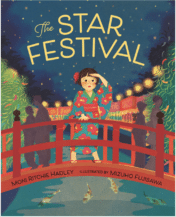
The Star Festival
Tanabata Matsuri, the Star Festival, celebrates a popular folktale: The Emperor of the Heavens separates his daughter, Orihime, from her love, Hikoboshi, all year—but on this day the two stars finally reunite, crossing a bridge over the Milky Way. For Keiko, her mama, and her grandmother, Tanabata is about making tanzaku wishes, taking in the colorful decorations, and eating delicious food like nagashi somen and shaved ice. But when Obaasan gets lost in the crowd, Keiko and Mama must make their own bridge to find her again—and see if their tanzaku comes true.
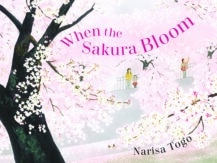
When the Sakura Bloom
When the Sakura Bloom sheds light on the cultural significance of cherry blossom season in Japan, and an insight into the unique mindset of its people. Through subtle text and gentle imagery readers will see the importance of slowing down to appreciate the moment.
When the Sakura Bloom is an understated illustration of the importance of celebrating the fleeting, delicate beauty of nature.
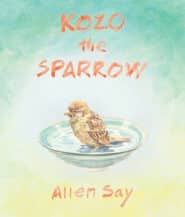
Kozo the Sparrow
A young boy sees a baby bird quivering in the hands of a neighborhood bully. Suddenly, he wants the orphan sparrow more than anything. He trades all his treasures for the bird and calls it Kozo, Little Boy. But how will he keep Kozo alive? In this painted album of memory, eight-year-old Allen Say talks about the best friend he made in his childhood.
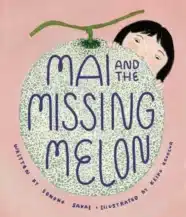
Mai and the Missing Melon
This charming story invites the reader on a journey through rural 1960s Japan following a little girl named Mai on the Enoden train, past the oceanside populated with fishers, and to the classic shrine-like home of her grandmother, or obāchama.
Loosely based on an event in Sonoko’s childhood, Mai wishes to share the gift of a sweet muskmelon with her grandmother but loses it on the train along the way. Obāchama shares the Japanese folktale of The Stone Buddhas as an example of the power of good intentions to cheer Mai up.
After the story, Mai hears from the train station master that the melon has been found, and she and her obāchama are able to enjoy the sweet muskmelon together.
This sweet story explores the cherished relationship between a young girl and her grandmother–two great friends despite the age gap–while the expressive art takes the reader through the Japanese countryside, past the sea, bamboo forests, and temples, drawn from the author’s own childhood memories.
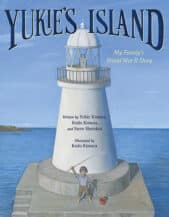
Yukie’s Island: My Family’s World War II Story
It’s 1945, the final year of World War II. Yukie Kimura is eight years old. She lives on a tiny island with a lighthouse in the north of Japan with her family, and she knows that the fighting that once felt so far away is getting closer.
Mornings spent helping her father tend to the lighthouse and adventuring with her brother are replaced by weeks spent inside, waiting. At some point, Yukie knows, they may be bombed.
Then, it happens. One Sunday, bombs are dropped. The war ends soon after that. Everyone tells Yukie there’s nothing to be scared of anymore, but she’s not so sure. So she watches and she waits—until a miraculous sight finally allows her to be a kid again.
This is the true story of Yukie Kimura told in her own words, co-created with her son, illustrator Kodo Kimura, and co-written with bestselling Newbery Honor author Steve Sheinkin. Yukie’s Island is an honest, thoughtful, and stirring picture book about being a child living through wartime.
